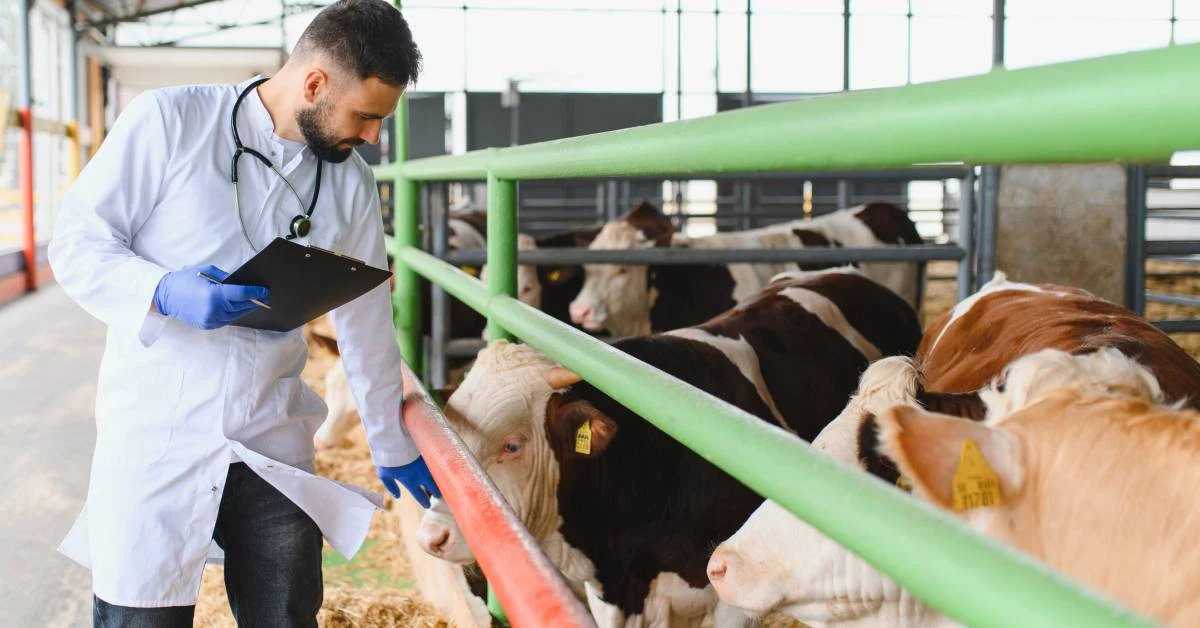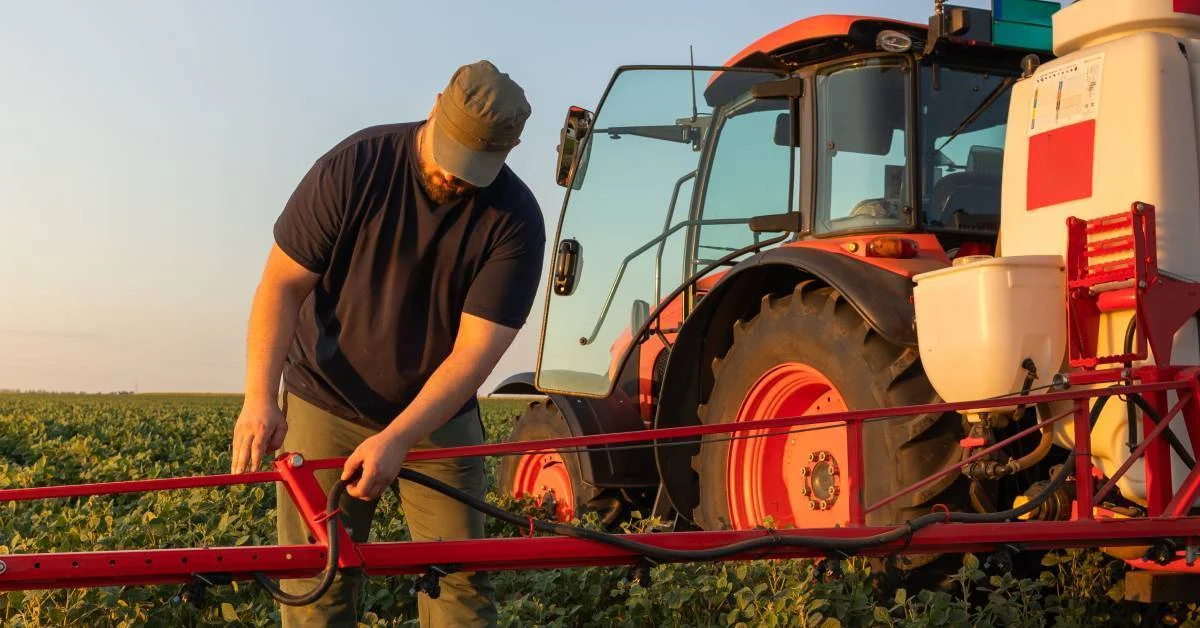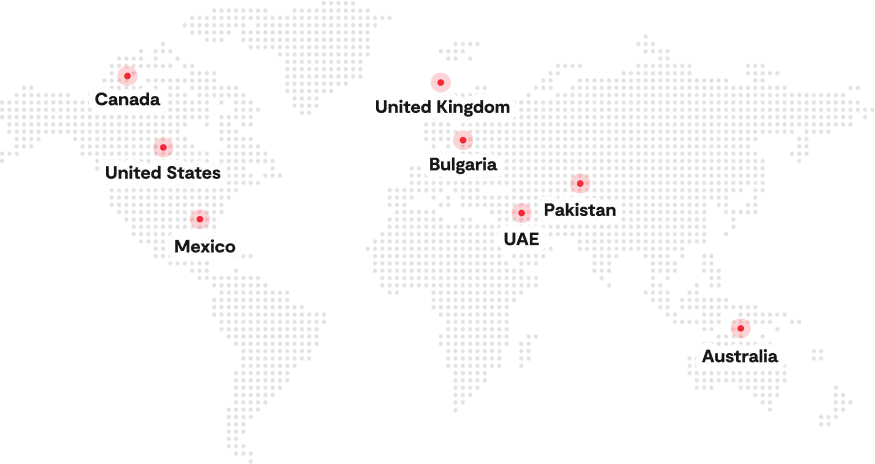Animal agriculture, a cornerstone of global food systems, faces unprecedented challenges today. According to the Food and Agriculture Organization (FAO), livestock contributes nearly 40% of global agricultural output. However, it is also responsible for significant environmental issues, contributing to over 14.5% of global greenhouse gas emissions.
As the world grapples with climate change, this sector faces increasing scrutiny, making it essential to address the underlying issues in animal agriculture. The biggest challenge confronting animal agriculture today is the impact of climate change.
Rising temperatures, extreme weather events, and shifting ecosystems threaten livestock health and productivity and exacerbate the sector’s environmental footprint. This blog will delve into the current state and most pressing issues in animal agriculture and discuss practical solutions that can help mitigate these challenges.
Overview of Animal Agriculture in 2024
In 2024, animal agriculture will be at a critical crossroads, reflecting the sector’s enduring importance and mounting challenges and issues in animal agriculture. As the backbone of global food systems, providing essential proteins and livelihoods to millions, this industry is increasingly influenced by technological advancements, shifting consumer preferences, and the pressing realities of climate change.
Recent data and events have highlighted the sector’s pivotal role in the economy while underscoring the urgent need for adaptation and innovation. This overview delves into the current state of animal agriculture, offering insights into the key statistics, emerging trends, and significant developments shaping its future in a rapidly evolving world.
Current State
Animal agriculture is integral to feeding the world’s population, providing essential nutrients through meat, dairy, and eggs. In 2024, the industry continues to be a significant economic driver, particularly in developing countries where livestock farming is a crucial source of income.
However, the sector is increasingly under pressure due to the environmental impact of large-scale operations and the ethical concerns surrounding animal welfare. The importance of animal agriculture cannot be overstated. It supplies a substantial portion of the global food supply and is critical in rural economies.
Despite its significance, the industry faces numerous challenges, including climate change, animal welfare concerns, and the rise of antibiotic-resistant bacteria. Significant events in 2024, such as extreme weather patterns and evolving regulatory landscapes, have further complicated the situation.
For example, severe droughts in major agricultural regions have disrupted feed supplies, leading to higher production costs and reduced output. Additionally, increasing consumer awareness about the environmental impact of meat consumption is driving demand for more sustainable practices within the industry.
Key Statistics
- Global Production: The FAO estimates that global meat production will reach 337 million tons in 2024, a slight increase from previous years, driven by rising demand in developing countries.
- Economic Impact: The livestock sector contributes over $1.4 trillion to the global economy and supports millions of jobs worldwide.
- Environmental Impact: Livestock farming accounts for 14.5% of global greenhouse gas emissions, with beef and dairy production being the most significant contributors.
Emerging Trends
Several emerging trends are shaping the future of animal agriculture. Technological innovations, such as precision farming and advancements in breeding and genetics, are helping farmers improve productivity and sustainability.
Moreover, there is a growing interest in regenerative agriculture practices that focus on restoring soil health and sequestering carbon. These trends are critical in addressing the industry’s challenges and ensuring its long-term viability.
What are the Biggest Challenges in Animal Agriculture?
As we navigate the complexities of modern animal agriculture, one challenge stands out as the most formidable: climate change. This is one of the pervasive issues in animal agriculture, reshaping the landscape and impacting everything from livestock health to overall productivity.
Rising temperatures, extreme weather events, and shifting ecosystems are not just environmental concerns—they directly influence the industry’s sustainability and viability. In addition to climate change, other issues in animal agriculture, such as animal welfare, antibiotic resistance, and economic pressures, further complicate the situation.
Identifying and understanding this biggest challenge is crucial to devising effective strategies to secure animal agriculture’s future.
1. Climate Change as the Primary Challenge
Climate change represents the most significant and immediate threat to the sustainability of animal agriculture. This challenge is twofold: while the sector is a substantial contributor to climate change, it is also severely impacted by its effects, creating a vicious cycle that demands urgent intervention.
Impact on Animal Health
Rising global temperatures and more frequent extreme weather events are harming livestock health. Heat stress is a growing concern, as it can lead to decreased feed intake, lower milk production, and increased animal mortality rates.
Additionally, changing ecosystems brought about by climate change alter the patterns of livestock-related diseases. For instance, warmer temperatures and shifting habitats are leading to the spread of vector-borne diseases, such as those carried by ticks and mosquitoes, which can devastate animal populations and even pose risks to human health.
Impact on Productivity
Climate change significantly disrupts the availability of critical resources like feed and water, leading to a decline in agricultural productivity. Unpredictable weather patterns, including prolonged droughts and intense storms, reduce crop yields essential for animal feed.
This scarcity drives up feed costs, making it more challenging for farmers to maintain their operations. Additionally, water resources are becoming increasingly scarce in many regions, further exacerbating the strain on agricultural productivity. The cumulative effect is a decrease in the overall efficiency and viability of animal agriculture, threatening food security on a global scale.
Environmental Footprint
Animal agriculture contributes substantially to environmental degradation, exacerbating climate change. The sector is a leading cause of deforestation, particularly in tropical regions where forests are cleared for pasture or feed crop production.
This deforestation contributes to the loss of biodiversity and increases carbon emissions. Additionally, animal agriculture is a significant source of water pollution due to runoff from farms that contain fertilizers, pesticides, and animal waste.
One of the most concerning environmental impacts is the sector’s contribution to greenhouse gas emissions, mainly methane, a potent greenhouse gas released by ruminant animals like cows.
Methane’s impact on global warming is significantly higher than carbon dioxide, making it a critical area for intervention. Using synthetic fertilizers in feed production also increases the sector’s carbon footprint, further accelerating environmental degradation.
2. Supporting Issues
Beyond the overarching challenge of climate change, several supporting issues in animal agriculture further complicate the landscape of animal agriculture. While distinct, these issues in animal agriculture are deeply interconnected with climate change, creating a complex web of challenges that require integrated and multifaceted solutions.
Animal Welfare Concerns
The industrialization of animal farming has led to significant animal welfare concerns, which are only magnified by the effects of climate change. In some farming operations, animals are kept in overcrowded and unsanitary conditions, which can lead to the rapid spread of diseases.
The use of growth hormones and antibiotics to accelerate production raises severe ethical and health-related questions. Furthermore, the stress and poor living conditions experienced by animals in such environments can compromise their immune systems, making them more susceptible to illness.
As climate change exacerbates these conditions, animal welfare is increasingly at risk, leading to higher mortality rates and lower quality of life for livestock.
Antibiotic Resistance
The widespread and often indiscriminate use of antibiotics in animal agriculture is contributing to the alarming rise of antibiotic-resistant bacteria. Intensive farming practices, where large numbers of animals are kept in close quarters, often necessitate antibiotics to prevent the spread of disease.
However, this overreliance on antibiotics leads to the development of resistant strains of bacteria, severely threatening animal and human health. As these bacteria become more resistant, once easily treatable infections are becoming increasingly challenging to manage, leading to higher mortality rates and more significant economic losses.
This is one of the issues in animal agriculture, further compounded by the lack of new antibiotics being developed, making antibiotic resistance one of our time’s most pressing public health challenges.
Economic Pressures
The economic landscape of animal agriculture is becoming increasingly challenging, with farmers facing pressures from multiple fronts. Fluctuating market demands, driven by changing consumer preferences and global trade dynamics, create uncertainty and volatility in the market.
Rising input costs, including feed, water, and energy, are squeezing profit margins, particularly for small-scale farmers with less financial resilience. Additionally, the industry faces increased global competition, with emerging markets and new technologies changing the competitive landscape.
These economic pressures are particularly acute in developing countries, where resources are limited, and farmers need more access to capital and technology. The combination of these factors is putting significant strain on the animal agriculture industry, making it more difficult for farmers to maintain sustainable operations.
How to Overcome These Animal Agriculture Challenges?
Addressing the multifaceted challenges and issues in animal agriculture requires innovative solutions and collaborative efforts across the industry. From adopting sustainable farming practices to leveraging technological advancements, several pathways exist to overcoming these obstacles.
By improving feed efficiency, integrating renewable energy, and implementing precision farming techniques, the industry can reduce its environmental footprint while enhancing productivity. Moreover, policy support and global collaboration are essential to drive these changes at scale.
Let’s explore the practical strategies to tackle the challenges and issues in animal agriculture to ensure a more sustainable future for the industry:
1. Adoption of Sustainable Practices
Adopting sustainable practices is crucial to addressing the challenges of climate change and other issues in animal agriculture. These practices help reduce farming’s environmental impact and improve the industry’s resilience and efficiency.
- Improving Feed Efficiency: Optimizing feed efficiency is one of the most effective ways to reduce methane emissions and enhance sustainability in animal agriculture. By selecting higher-quality feed and incorporating feed additives that reduce methane production, farmers can lower greenhouse gas emissions while maintaining or even increasing productivity.
- Integrating Renewable Energy: Utilizing renewable energy sources such as biogas from manure, solar panels, and wind turbines can significantly reduce animal agriculture’s carbon footprint. These technologies also provide farmers with a more sustainable and cost-effective way to power their operations.
- Regenerative Agriculture: Regenerative agriculture practices focus on restoring soil health, increasing biodiversity, and sequestering carbon. By adopting practices such as rotational grazing, cover cropping, and agroforestry, farmers can create more resilient and sustainable farming systems that benefit both the environment and their bottom line.
2. Technological Innovations
Technological advancements are pivotal in addressing the challenges and issues in animal agriculture. These innovations are helping farmers optimize resource use, improve animal health, and reduce their environmental impact.
- Precision Farming: Precision farming technologies, such as AI, IoT, and data analytics, allow farmers to monitor and manage their operations more effectively. By collecting and analyzing data on animal health, feed consumption, and environmental conditions, farmers can make informed decisions that improve efficiency and sustainability.
- Breeding and Genetics: Advances in livestock breeding and genetics enable the development of livestock breeds more resilient to climate change. These breeds are better equipped to withstand heat stress, disease, and other challenges and issues in animal agriculture, making them a valuable asset in the fight against climate change.
3. Policy and Regulatory Support
Government policies and regulations support the transition to more sustainable animal agriculture practices. By providing financial incentives, technical assistance, and regulatory frameworks, governments can help farmers adopt practices that reduce their environmental impact.
- Government Initiatives: Many governments are already implementing initiatives to promote sustainable animal agriculture. These include subsidies for renewable energy projects, grants for research and development, and regulations that limit the use of harmful chemicals and antibiotics.
- Global Collaboration: Addressing the challenges of climate change and other issues in animal agriculture requires global collaboration. International organizations, governments, and industry stakeholders must collaborate to develop and implement solutions that benefit the environment and the global food system.
4. Dietary Shifts and Consumer Education
While technological and policy solutions are essential, consumer behavior also plays a significant role in addressing the challenges and issues in animal agriculture. By promoting plant-based alternatives and raising awareness about the environmental impact of meat consumption, we can help reduce the pressure on the industry.
- Promoting Plant-Based Alternatives: The growing popularity of plant-based diets offers a promising way to reduce the environmental impact of animal agriculture. By promoting plant-based alternatives and encouraging dietary shifts, we can help alleviate some of the industry’s pressures.
- Educational Campaigns: Raising awareness about the environmental impacts of meat consumption and the benefits of sustainable choices is crucial for driving change. Educational campaigns can help consumers make informed decisions that support more sustainable food systems.
Conclusion
The challenges and issues in animal agriculture today, particularly the impact of climate change, are significant and complex. However, we can address these issues by adopting sustainable practices, using technological innovations, and supporting policy initiatives, creating a more resilient and sustainable industry.
As consumers, we also have a role to play by making informed choices that support the health of our planet and the well-being of future generations.
FAQs
What are the Biggest Challenges Facing Animal Agriculture Today?
Climate change, issues in animal agriculture, antibiotic resistance, and economic pressures are among animal agriculture’s most significant challenges. These challenges threaten livestock health, productivity, and the industry’s sustainability.
How Does Climate Change Impact Animal Agriculture?
Climate change affects animal agriculture by causing heat stress, disrupting feed availability, and increasing the spread of diseases. It also contributes to a higher environmental footprint, making it a critical challenge.
What Role Does Technology Play in Overcoming Challenges in Animal Agriculture?
Technological innovations like precision farming and advanced breeding techniques help farmers improve efficiency, enhance animal health, and reduce environmental impact, making them vital for overcoming challenges in animal agriculture.
How Can Sustainable Practices Help Address Animal Agriculture Challenges?
Sustainable practices, such as improving feed efficiency, integrating renewable energy, and adopting regenerative agriculture, can reduce environmental impact and increase the resilience and productivity of animal agriculture.
Why is Antibiotic Resistance a Concern in Animal Agriculture?
Antibiotic resistance in animal agriculture results from antibiotic overuse, leading to resistant bacteria. This poses significant health risks for animals and humans, making it a pressing issue.







